Spotlight on Brian Plonka
Sep 23, 2015
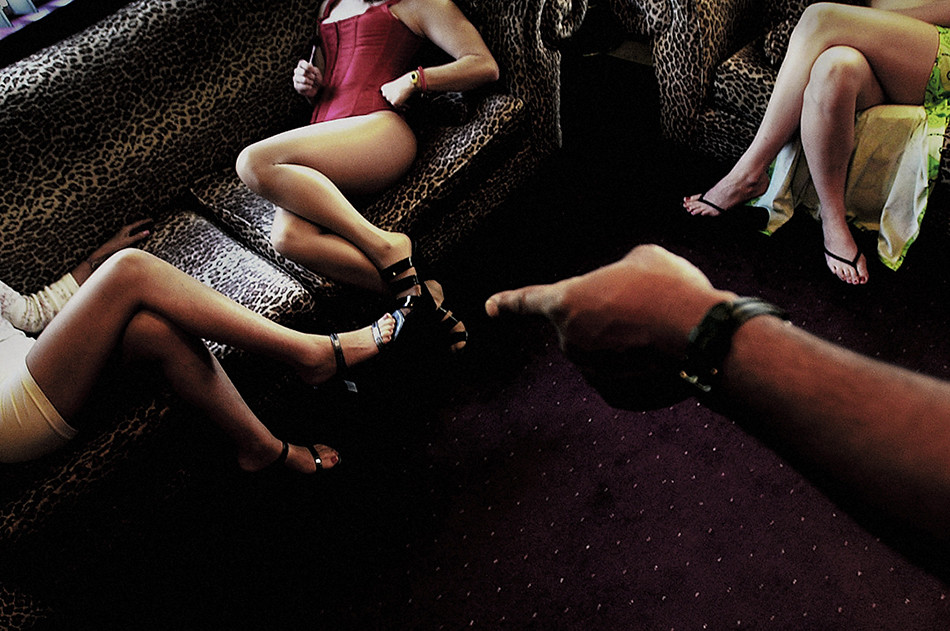
TID:
Thanks for being open to this, Brian. On a personal note, I’m really glad you’re open to this - I should preface the interview by stating you were one of the most significant inspirations to me, and so many others who were coming up at the same time in photojournalism. You have produced some substantial bodies of work throughout your career. It’s an honor to get to speak with you. That said, can you tell us briefly about the backstory of the lead image?
BRIAN:
First of all I want to thank you for including me as part of this conversation. It’s a real honor to be included in such great company. This image that depicts (for me) "YOU SHALL NOT COMMIT ADULTERY” came from a the Old Bridge Ranch brothel outside of Sparks Nevada. This was one of ten personal attempts to depict "The Ten Commandments” for the Spokesman-Review. I’ve always tried to push the norm in newspaper photojournalism to give our readers a personal look at the world around me.
TID:
At the time, a conceptual story like “Ten Commandments” wasn’t that common. Can you tell us more about where the original idea came from/inspiration for it?
BRIAN:
So I’m what they call a “cradle Catholic”. I was raised by many pinches by my mothers’ finely manicured fingernails sitting, kneeling and standing at the catholic church just a few miles from my home in New Castle, Pa. I guess over the years I became a bit jaded if you will being dressed in plaid suits and saddle shoes. While I was working for Copley Newspapers in suburban Chicago I was covering the Chicago Bulls in Miami during the playoffs. While at my hotel room a huge thunderstorm knocked out power in the hotel except for a few emergency lights. Geez, no T.V. ? Yikes. I opened the drawer of the nightstand next to my bed and found the Bible (which seems to be in ever hotel I’ve ever been into. I started reading Revelations about the number of the beast and the world coming to and end. With the lights out it was a bit frightening. So flipping through the good book I stumbled on the the Ten Commandments. Right away I began thinking that somehow, someway this would be a great photo-essay. At this point in my career I began embarking on more less linear storytelling.
TID:
How did you pitch the project and what was the response? Once you got approval, how did you plan and prepare for the project?
BRIAN:
The idea in Chicago to pursue this story was met with. “Are you kidding us?” I was like well no, think about it, the oldest laws in the land. It’s a great story. I was already knee deep in a project about alcohol and its effect on society and was urged to stay focused on that project (as well as many other projects). A few years down the road my wife and I ended up at The Spokesman-Review. During first years there I was surrounded by the smartest people I’ve ever had the pleasure working with. I was really in gear doing essays with coaching from photo editor John Sale. He really pushed me to think a bit different. It was the the norm to do essays based on themes like nature, events or even a certain color. My style started to really change during those years. I pitched the story again and was met with the same expression. But that was because we needed a hook. But more importantly we need words to make this viable. So with 2001 coming to a close we tied it in to the start of the new millennium that was already upon us. The editors assigned several writers to scribe personal essays on each commandment. Before we started the photography the editorial board invited several theologians to the paper to get they’re take on the laws that was very helpful. Well that was until the rabbi visiting mentioned there were actually 613 laws associated here. Hmmmmm we thought. Cool, but lets stick to the 10. So in reality it took some 6 years to get this project started. I tend to not let go of an idea. As far as planning I wanted to stay as local as possible except for a trip to Seattle, and Nevada. Eight of the commandments were shot in a 50 mile radius.
TID:
You have a wide range of expressions in this piece, can you talk about your various approaches to each image?
BRIAN:
My early years in catholic church met up with a bit of adult sarcasm as I explored ways to put my vision of the oldest laws into print. I did not want to make a mockery of this. But at the same level a bit entertaining if you will…..
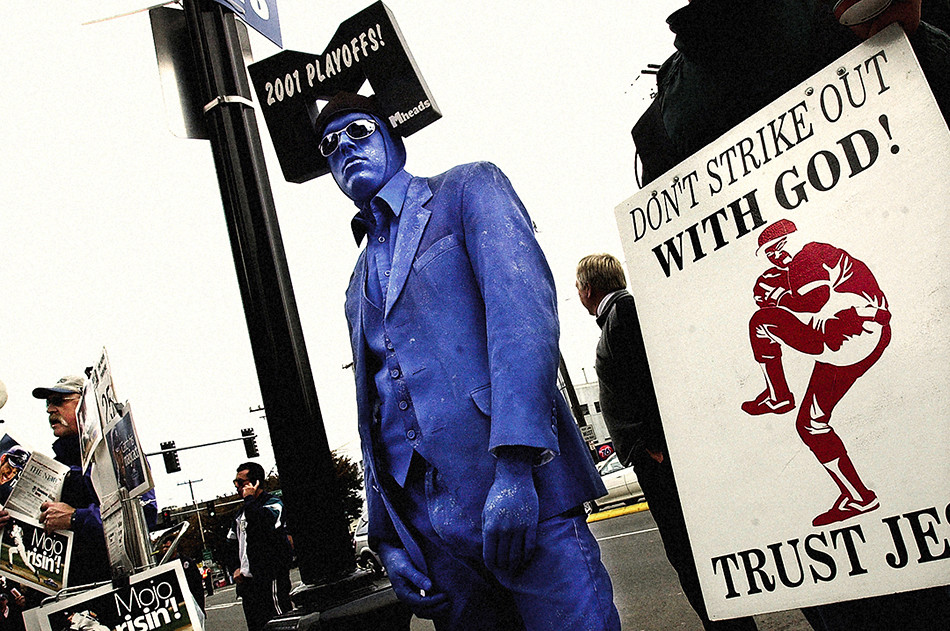
I AM THE LORD YOUR GOD; YOU SHALL NOT HAVE ANY GODS BEFORE ME
For this law I wanted to show how as a society we are wrapped up in our sports teams and sports heroes. Spokane is a small sports market to I drove over to Seattle during the NL baseball playoffs. I think this image works but in hindsight I wish I would have gone another angle with fans reaching out to players before or after the game. I got caught up in the signage. To me this is the weakest link in the story.
YOU SHALL NOT WORSHIP FALSE IDOLS OR GRAVEN IMAGES
I passed this scene on my commute for a year before stating the story. When I knocked on the door to get permission to take the photo an older woman answered. I told her what I was doing and she said Elvis is at the same level with God.
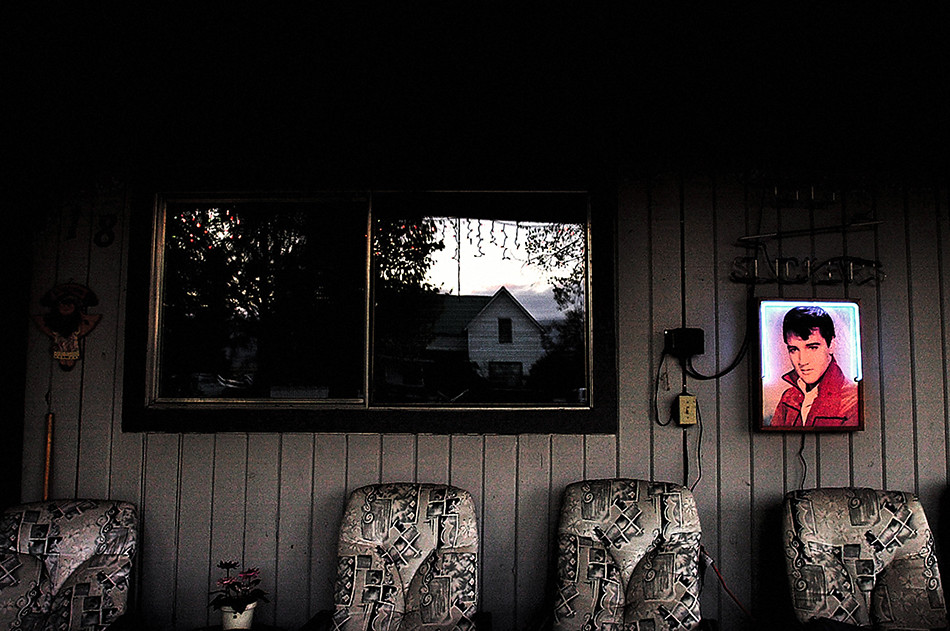
YOU SHALL NOT TAKE GOD'S NAME IN VAIN
This law before I started concerned me visually. How was I going to photograph using his name in vain? Thankfully the heavy metal band “Godsmack” visited Spokane during the month I was into the the project. It almost seemed like a scene outta hell with the fans. Her green contact lenses were right on time with the lights. The promoter of the concert approached me during the 3
song limit in the photo section as asked me why I wasn’t photographing the band and asked me to leave after the first song.
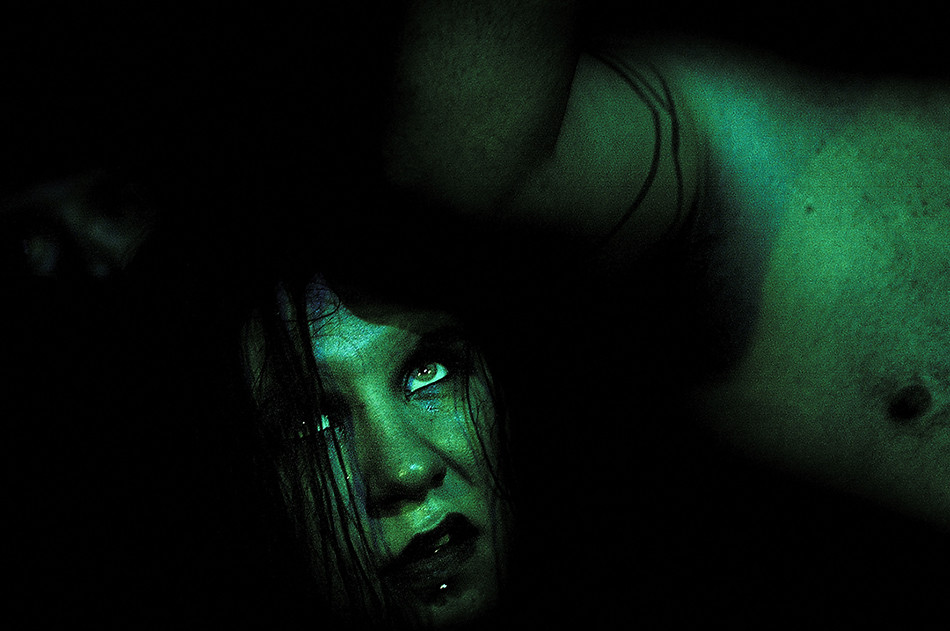
KEEP HOLY THE SABBATH
I took a 4 hour drive to Jerry Johnson Hot Springs in the wilds of Idaho to hopefully show someone at peace with nature. I never been there before and it was just after dawn when I saw the steam rising from the trail in front of me after a 45 minute hike to the springs. One naked man was there. Hmmmmm well I just approached him and told him what I was up to. He thought it a bit strange and said ok as long as I joined him for a soak since I traveled all that way. As they say “when in Rome………..”

HONOR YOUR FATHER AND MOTHER
I went through a local Hospice to find this situation of children caring for parents.
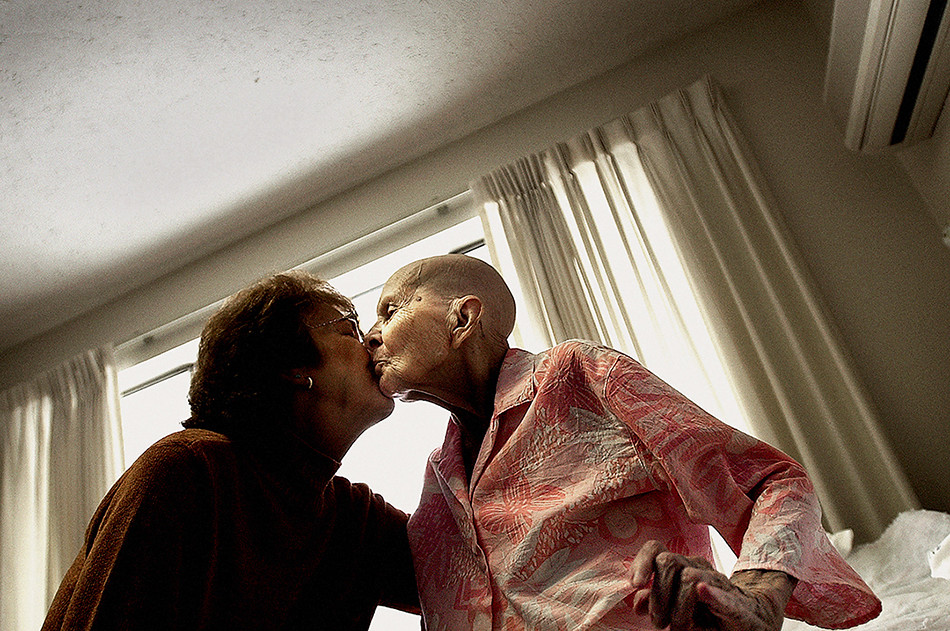
YOU SHALL NOT KILL
This is were having the local theologians paid off. Many agreed that “killing” is a thought or a way of life outside God. With the now defunct Aryan Nations in the area I knew many murderous thoughts would be aplenty. After being denied access to the compound this guard said he didn’t want his face photographed. He turned and walked away and I just thought…. thank you for this one Jesus.

YOU SHALL NOT STEAL
Living in an area where hunting is the norm I decided to focus on poaching as a way of stealing. This picture was taken inside the evidence locker at the Fish and Game local headquarters.
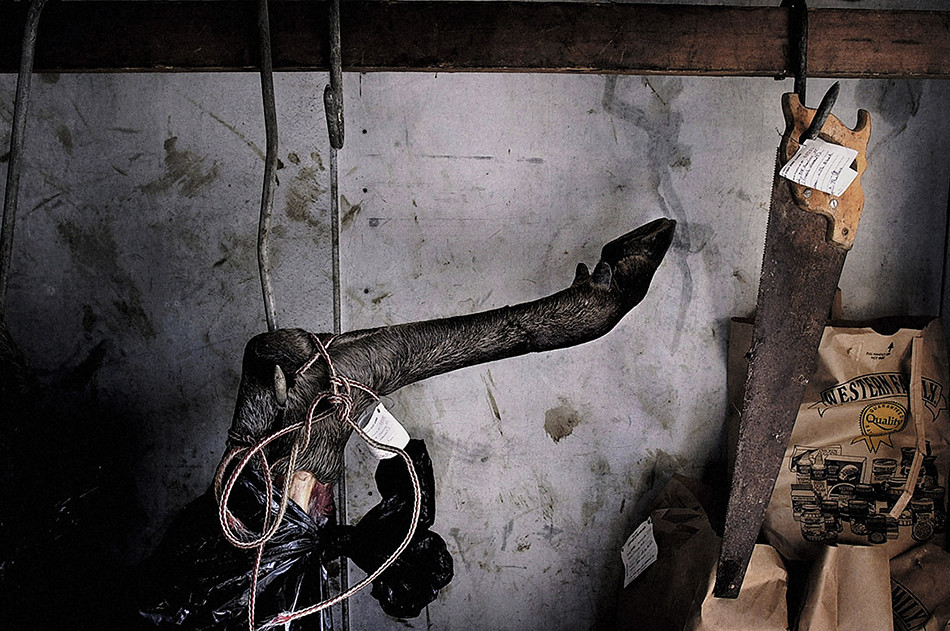
YOU SHALL NOT BEAR FALSE WITNESS
When our son was born I never forgot his first trip to Santa. I overheard a parent telling there twins “If you don’t behave here in line then Santa won’t bring you any presents this year.”
I photographed this law just for them. It was the perfect form of lying that I wanted to present.
I photographed this law just for them. It was the perfect form of lying that I wanted to present.
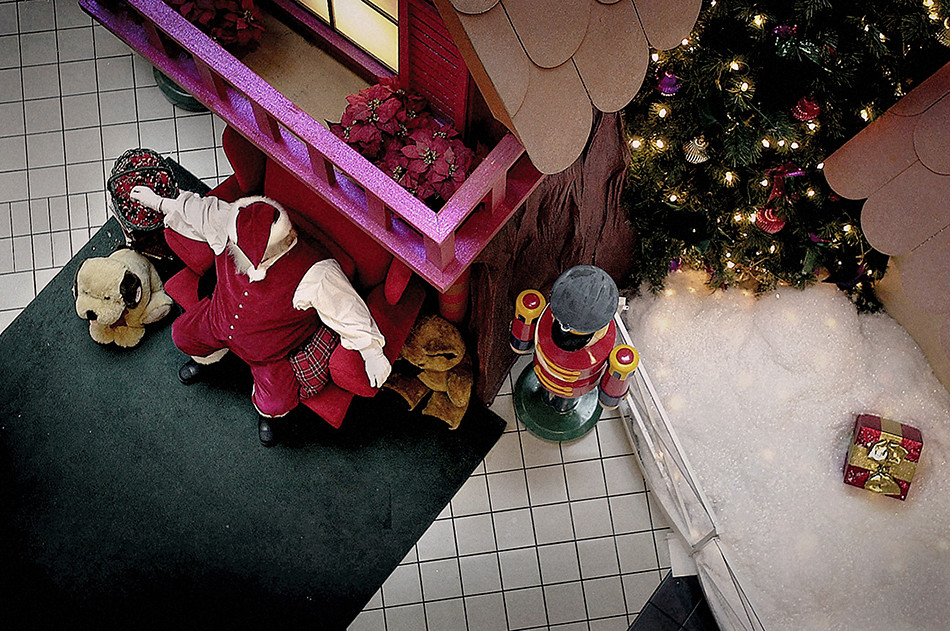
YOU SHALL NOT COVET
I used a first generation D1 on this project. I was really bad at low light situations back then. I don’t think I have a flash. I should. But don’t. So When photographing these beauty queens for the final law I shot at like an 8th second to grab light from all the flashes from the moms cameras. I’m always very truthful when telling people what Im doing and what the story is. When the promoter asked why I wanted to photograph the event I told her it was a story on the laws and this one was for ‘coveting.' She looked at me and said, “Well isn’t that nice! Have a great time."

TID:
What type of problems did you face in this process? Importantly, how did you overcome these problems?
BRIAN:
I guess the biggest problem I faced was trying to sell this story. Like I said earlier it took several years to get this off the ground. But I was persistent and still am to this day.
TID:
Now, onto the moment. When I first saw this image, I and many others were struck at the heavy symbolism at play. It’s an incredible image, especially given the context. Can you talk about what it was like when you first arrived, and how you worked to gain access to this moment?
BRIAN:
As far as adultery I was perplexed with this one. I wanted to stay local. Maybe I could find a “working lady” and a john on Spokane’s east side. But what if I was challenged even with a nondescript photograph by the people in it? Did not want to take that chance. So we headed out of the coverage area for this one. If prostitution in legal in Nevada it should be easier? I called the Old Bridge Ranch and she said come on down. YOU SHALL NOT COMMIT ADULTERY As mentioned before this was a quick road trip to the outskirts on Reno. I called the brothel a few days before and the Madam said it would be ok to stop by. I did tell her about the story and I don’t think she ever heard of the 10 Commandments (that was the feeling I got from her). Iwalked up to the gate of the brothel and rang the buzzer. As I walked in some 7-10 “working ladies” lined up while others took to chairs and sofas for inspection. I was really nervous. I said I was the guy that called a few days ago about that “different request” they all looked at me and said they could take care of “any” request. When they saw the camera around my neck the madam said he’s not a customer.
Suddenly all those glossy smiles turned away. I was not allowed to show the faces of the girls or any clients. Bummer. But, as I spent the next 11 hours in the lobby over the next 2 days I saw the picture many times over. Every time a client walked in he would point out his selection. So with every client that walked in only 1 out of some 40 it seemed gave permission to photograph his finger. That was all right by me.

TID:
This body of work has lasting value to me, and I still use this often when coaching others of ways to think outside of the box visually. What lessons did you learn about those you photographed and what reactions were upon the publication of it?
BRIAN:
It opened a huge conversation on faith. Several editorials followed. Someone called me and said the newspaper should not tell how people should live their lives. I said we weren’t. "God is…" then they hung up on me. As far as lessons on this, one is that everyone has their own opinion on how to interpret sin or any other issue. Again, I’m not saying what is and what is not right. I believe the piece was more of an "photographic editorial.” I truly believe there is a part of myself represented in the body of work.
TID:
What advice do you have for photographers wanting to do this type of work?
BRIAN:
First and foremost get out of your comfort zone. Quit playing safe with what has always worked. I have done many essays that reflect who I am as a person. From addiction and even the way I see myself in a mirror my stories are a part of where and what I came from and continue to be. My advice is that you should always insist in your beliefs and values as a journalist. Take that to the street and help make the world a better place. Dig deep and find those moments in life that have created you. I truly believe when you put yourself out there people will understand where you are coming from. Its really important to relate on some level. I was called out once in a housing project by an older woman while I was working on a alcohol story. She said to the effect my jeans with holes and me wearing that an expensive camera does not match. She said next time you come back just be “Brian.” I did and then she let me photograph her.
TID:
Moving forward, what type of work are you doing now and what can people look for in your work down the road?
BRIAN:
Wel,l my newspaper career is over. The first 2 years were especially hard after my buyout from the Spokesman-Review. Then late at night I remembered: "Be you. Tell stories." That week I landed my first photo project for a non-profit. So with that said, I put way too much time in my clients' story. That’s ok because they deserve it. I still tell stories as part of my business at brianplonka.com. Over the past several years I’ve been shooting more video to make short film documentaries for non-profits and profit companies alike. I just turned 50 this September and I truly feel I’m starting a new career. I’m out of my comfort zone shooting stills leaning more to motion. That’s the way I stay fresh. A new challenge. A new story.
:::BIO:::
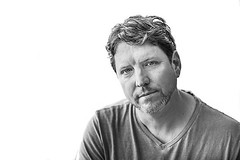
Brian Plonka started his photojournalism career at age 15 in New Castle, PA.He was named POYi Newspaper Photographer of the Year during the 59th annual competition. He has been a 10-time Photographer of the Year in various state and regional competitions. He has won several Gold Medals in the Society for Newspaper Design contest for photojournalism.
He has lectured and been a faculty member in numerous contests and workshops.
His wife Kathy is a staff photographer for the Spokesman- Review. They have a 16 year-old son, Jordan, and live along the shores of Hauser Lake in North Idaho. His essay-style of still documentation has been merging with the motion during the past several years after leaving the newspaper industry. He has been maturing a new career as a freelance photojournalist and filmmaker based in the Inland Northwest.
You can see more of his work here: